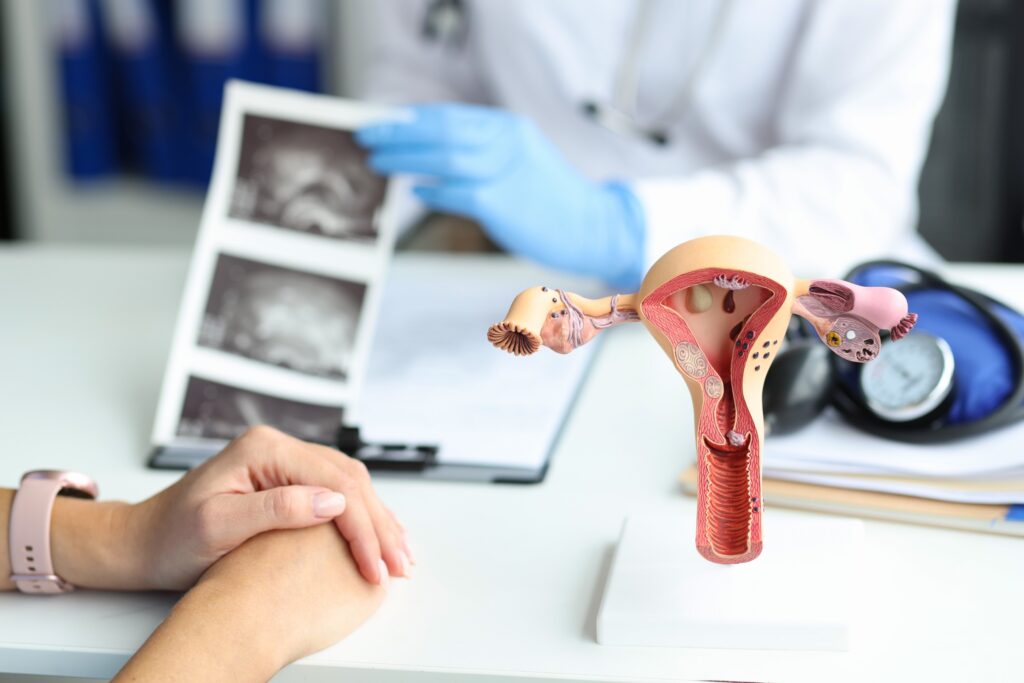Atosiban is a drug administered intravenously prior to an embryo transfer to reduce uterine contractions. Several studies suggest that abnormal or exaggerated uterine contractility could explain some cases of embryo implantation failure and recurrent miscarriages. Atosiban (an oxytocin antagonist) can decrease the frequency of these contractions.
Embryo Implantation
After embryo transfer, the embryo must implant. Implantation is the process by which the embryo attaches to the surface of the endometrium, infiltrates the deep layer, and adheres. Implantation requires a competent embryo, a receptive endometrium, and synchronized communication between maternal and embryonic tissues. Embryonic abnormalities, poor endometrial receptivity, or insufficient interaction between the embryo and maternal endometrium can lead to implantation failure.
Repeated Implantation Failure
Repeated embryo implantation failure (RIF) is a challenge in IVF treatment. Although there is no standard definition yet, RIF can be considered as the inability to achieve a clinical pregnancy after transferring high-quality embryos two or more times or after transferring 10 or more embryos (the definition may vary by fertility clinic). These failures can bring tremendous mental and financial pressure to patients.
Traditionally, embryo quality has been considered the main cause of RIF. However, this does not rule out other pathologies, such as uterine abnormalities (congenital or acquired), endometrial thickness, chronic endometritis, endometrial vascularization, and uterine contractions, which can affect endometrial receptivity and, therefore, embryo implantation.
It has been observed that embryo transfer can trigger uterine contractions. Several studies show that approximately 30% of patients undergoing embryo transfer experience excessive uterine contractility (>5 contractions per minute), which can negatively affect embryo implantation and clinical pregnancy rates.
Atosiban and Implantation Failure
In 2007, the first report of a successful pregnancy after using Atosiban was published. Since then, at least four randomized controlled studies and a meta-analysis of six studies (1,754 patients) have been published, showing a modest improvement in clinical pregnancy rates but no effect on live birth rates in IVF patients overall.
Another recent review on the efficacy of Atosiban in cases of repeated embryo implantation failure included two prospective studies and five retrospective ones. Their results showed a significant association between Atosiban and a higher clinical pregnancy rate in participants with two or three previous failed embryo transfers.
Atosiban and Adenomyosis
Adenomyosis is a benign condition that affects the uterus, characterized by the presence of uterine mucosa tissue (endometrium) in the uterine wall (myometrium). Adenomyosis is diagnosed in one in ten women, 80% of whom are between 40 and 50 years old, and it negatively impacts a woman’s fertility.
It has been reported that the incidence of abnormal contractility is higher in women with adenomyosis, which may partially explain the higher failure rate in reproductive treatments observed in this group of women, using either their own or donor eggs.
Ideally, women with adenomyosis should be examined for abnormal uterine contractions during embryo transfer before considering therapy with Atosiban. However, the possibility of empirical therapy with Atosiban in women with adenomyosis and repeated implantation failure could be considered.
Atosiban and Fibroids
Intramural fibroids cause infertility for multiple reasons, but the only measurable cause is uterine peristalsis (uterine contractions). It is unclear why some patients with intramural fibroids, especially those affecting the endometrial-myometrial junction, experience increased uterine peristalsis. This increase in uterine contractions is associated with poorer pregnancy outcomes.
Removing fibroids through surgery (myomectomy) does not seem to improve pregnancy outcomes in these patients. An alternative is to reduce uterine peristalsis with medications such as Atosiban during embryo transfer.
Conclusion
To date, Atosiban does not appear to improve reproductive treatment outcomes when used in the general population. However, it is a drug that could help with embryo implantation failure and perhaps in patients with adenomyosis and fibroids. Many more studies are needed to confirm whether this positive effect is real and significant. In the meantime, its empirical use does not involve significant side effects for the patient, though it comes with an added cost that should be carefully considered.
At URH García del Real, we individually assess each couple to offer the best possible treatment. If you have more questions about Atosiban or any other assisted reproduction topic, at URH García del Real, we offer a free initial consultation. You can make an appointment or call 917401690, and we will be happy to help.










